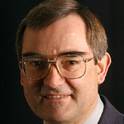To address challenges of assessing space weather modeling capabilities, the CommunityCoordinated Modeling Center is leading a newly establishedInternational Forum for Space WeatherModeling Capabilities Assessment. This paper presents preliminary results of validation of modeled foF2 (F2 layer critical frequency) and TEC (total electron content) during the first selected 2013 March storm event (17 March 2013). In this study, we used eight ionospheric models ranging from empirical to physics-based, coupled ionosphere-thermosphere and data assimilation models. The quantities we considered are TEC and foF2 changes and percentage changes compared to quiet time background, and the maximum and minimum percentage changes. In addition, we considered normalized percentage changes of TEC. We compared the modeled quantities with ground-based observations of vertical Global Navigation SatelliteSystem TEC (provided by Massachusetts Institute of Technology Haystack Observatory) and foF2 data (provided by Global Ionospheric Radio Observatory) at the 12 locations selected in middle latitudes of the American and European-African longitude sectors. To quantitatively evaluate the models’ performance, we calculated skill scores including correlation coefficient, root-mean square error (RMSE), ratio of the modeled to observed maximum percentage changes (yield), and timing error. Our study indicates that average RMSEs of foF2range from about 1 MHz to 1.5 MHz. The average RMSEs of TEC are between ~5 and ~10 TECU (1 TEC Unit= 1016el/m2). dfoF2[%] RMSEs are between 15% and 25%, which is smaller than RMSE of dTEC[%] ranging from30% to 60%. The performance of the models varies with the location and metrics considered.
Article
Validation of Ionospheric Specifications During Geomagnetic Storms: TEC and foF2 During the 2013 March Storm Event
Space Weather
Document Type
Article
Publisher
American Geophysical Union
Publication Date
10-10-2018
Disciplines
Abstract
Citation Information
Shim, J. S., Tsagouri, I., Goncharenko, L., Rastaetter, L., Kuznetsova, M., Bilitza, D., et al. (2018). Validation of ionospheric specifications during geomagnetic storms: TEC and foF2 during the 2013 March storm event. Space Weather, 16, 1686-1701. https://doi.org/10.1029/2018SW002034
